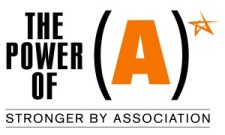Making innovation a habit
2 April 2012 Leave a comment
 To be real, innovation needs to be a habit, not a standalone project. And habits are learned through constant practice – doing something consistently and constantly until it becomes an ingrained feature of everyday activity. Something that is constantly happening, almost without conscious effort or thought.
To be real, innovation needs to be a habit, not a standalone project. And habits are learned through constant practice – doing something consistently and constantly until it becomes an ingrained feature of everyday activity. Something that is constantly happening, almost without conscious effort or thought.
Part of that is systems and environment. Apple is often and rightly cited as a model innovative organization. A major element in their success as innovators is that every aspect of operations, from the design of work spaces to management and reward systems, is calibrated to create an environment and culture that maximizes the potential for innovation to occur.
But perhaps a bigger element is the established habit of trial and error: Try things, even if they don’t pan out. Constantly. And learn from both what worked and what didn’t.
The first woman to make the top tier of Forbe’s gallery of the richest people on the planet list is Sara Blakely, the founder and CEO of Spanx. In the inevitable round of interviews that followed being named to this list last month, she frequently related the following item from her personal history. As a child, the conversations around the family dinner table were a little different than most. Her father didn’t ask “What did you learn in school today?” Instead he asked “What did you fail at this week?” It instilled in her, from an early age, that constant habit of trying new and different things. Just to see what works. And what didn’t.
Of course there is a balance that needs to be struck. As our associations strive to reinvent and re-engineer core products and services to keep them relevant and effective in a rapidly changing world, we have to risk trying and failing. But we dare not risk a total and catastrophic failure when this year’s annual meeting or this month’s certification and testing dates come round. There are too many members whose personal and professional success, as the world is now, today, are dependent upon those services. The association’s long-term need to innovate, evolve and grow cannot come at their expense.
But establishing a culture of innovation begins by establishing a habit of trial. And a tolerance for failure.

